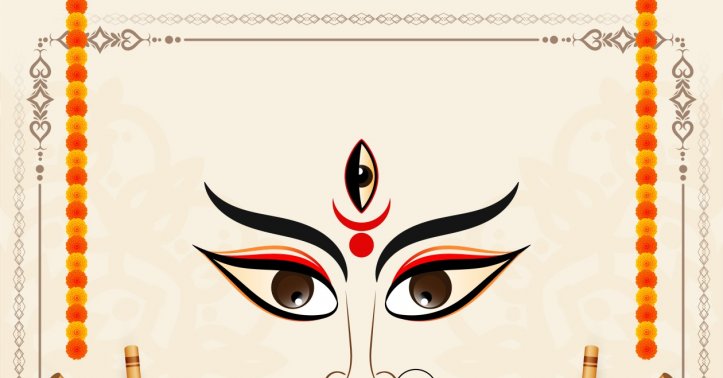
Significance of Navaratri
This is a broad topic with cultural, religious, and social dimensions. I should break it down into digestible parts while keeping it comprehensive.
First, I’ll start with a concise definition to set the context. Then, I’ll highlight the core spiritual meaning—the victory of good over evil—since that’s the essence of Navratri. The user might also appreciate knowing how it’s celebrated, so I’ll cover the regional variations and rituals like Garba/Dandiya. Finally, I’ll tie it together by emphasizing its modern relevance, like the celebration of feminine power and community bonding.
The response should be structured but fluid, avoiding jargon while maintaining depth. I’ll keep the tone respectful and informative, matching the cultural importance of the festival.
Of course. The significance of Navratri is profound and multi-layered, encompassing spiritual, cultural, and social dimensions. It is one of the most important and widely celebrated Hindu festivals.
At its core, Navratri (meaning "Nine Nights") is a festival dedicated to the worship of the Hindu deity Goddess Durga and her various forms. It symbolizes the victory of good over evil and the power of the divine feminine energy (Shakti).
Here’s a breakdown of its significance:
1. Spiritual & Religious Significance
-
Triumph of Good over Evil: The most famous legend associated with Navratri is the battle between Goddess Durga and the buffalo demon, Mahishasura. After a fierce nine-day battle, Durga defeated and killed him on the tenth day, which is celebrated as Vijayadashami or Dussehra (the "day of victory"). This symbolizes the ultimate victory of divine power and righteousness over evil and arrogance.
-
Worship of the Divine Feminine (Shakti): Each of the nine nights is dedicated to a different form of the Goddess, representing her various attributes:
-
Day 1: Shailaputri - The daughter of the mountains.
-
Day 2: Brahmacharini - The one who practices devout austerity.
-
Day 3: Chandraghanta - The one who has a half-moon shaped like a bell.
-
Day 4: Kushmanda - The creator of the universe.
-
Day 5: Skandamata - The mother of Skanda (Kartikeya).
-
Day 6: Katyayani - The daughter of sage Katyayana.
-
Day 7: Kaalratri - The destroyer of darkness and ignorance.
-
Day 8: Mahagauri - The extremely fair one, symbolizing purity.
-
Day 9: Siddhidatri - The granter of supernatural powers.
-
-
Inner Purification: The nine days are considered highly auspicious for spiritual growth. Devotees fast, pray, and meditate to purify their minds and bodies, seeking the Goddess's blessings to overcome internal demons like anger (krodha), lust (kaam), greed (lobh), and ego (ahankar).
2. Cultural & Regional Significance
Navratri is celebrated differently across India, each with its own unique cultural flavor:
-
Eastern India (West Bengal, Odisha, Assam): Here, it is celebrated as Durga Puja. It marks the annual visit of Goddess Durga to her parental home with her children. Elaborate and artistic clay idols of the Goddess slaying Mahishasura are installed in beautifully decorated temporary structures called pandals. The tenth day (Vijayadashami) is when the idols are immersed in water, symbolizing her return to her divine abode.
-
Western & Northern India (Gujarat, Maharashtra): This is the most famous form of celebration, known for its vibrant Garba and Dandiya Raas dances. People dress in colorful traditional clothes and dance in large circles with rhythmic clapping or decorated sticks (dandiyas) throughout the night. It is a massive community celebration.
-
Southern India (Karnataka, Tamil Nadu, Andhra Pradesh): In the south, it is a time for displaying Golu or Bommai Kolu—a stepped display of dolls and figurines depicting gods, goddesses, and scenes from mythology. People visit each other's homes to view the displays, exchange gifts, and sing devotional songs. It is also considered an highly auspicious time to start new ventures, learnings, and buy new items.
3. Agricultural Significance
-
Harvest Festival: Navratri coincides with the end of the monsoon season and the beginning of the harvest season. In many parts of India, it is primarily a harvest festival where farmers thank the Goddess for a good yield and pray for prosperity in the coming season.
4. Philosophical Significance
-
The Journey of the Soul: The nine days can be seen as a metaphor for the spiritual journey of a seeker:
-
The first three days are dedicated to destroying impurities (dedicated to Goddess Durga - the destroyer).
-
The next three days are for cultivating positive qualities and spiritual wealth (dedicated to Goddess Lakshmi - the bestower of wealth).
-
The final three days are for gaining wisdom and knowledge (dedicated to Goddess Saraswati - the goddess of knowledge).
-
-
On the tenth day, Vijayadashami, the seeker achieves liberation or success (victory).
In a Nutshell:
| Aspect | Significance | ||||
| Spiritual |
|
||||
| Cultural |
|
||||
|
|
||||
| Agricultural |
|
||||
| Personal |
|
In essence, Navratri is a vibrant, powerful celebration that reaffirms faith, celebrates culture, and reminds individuals and communities of the eternal power of good and the importance of inner purification.
By Jamuna Rangachari








